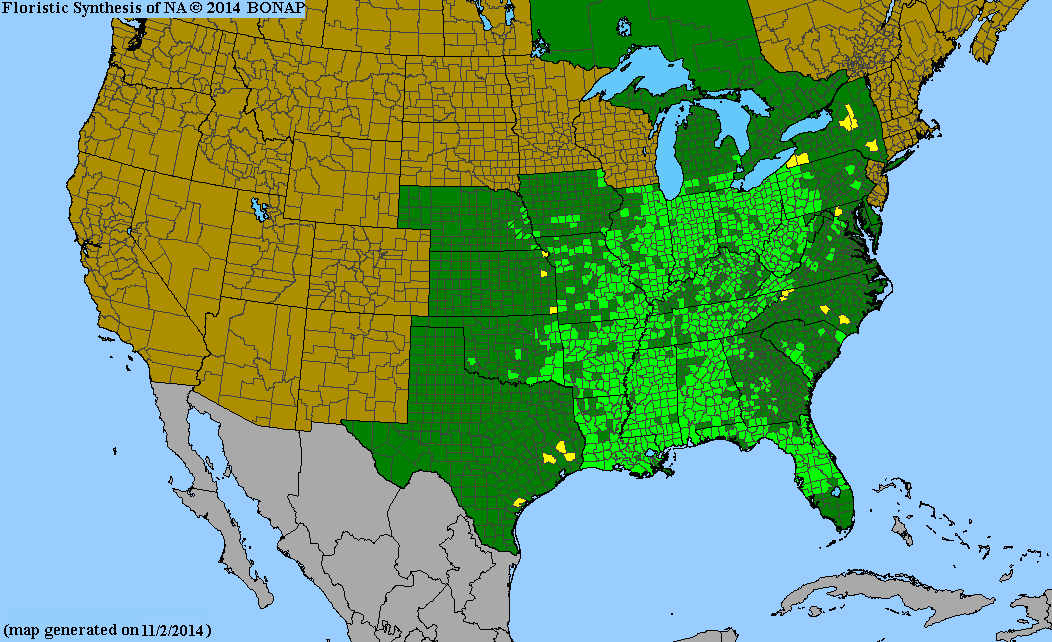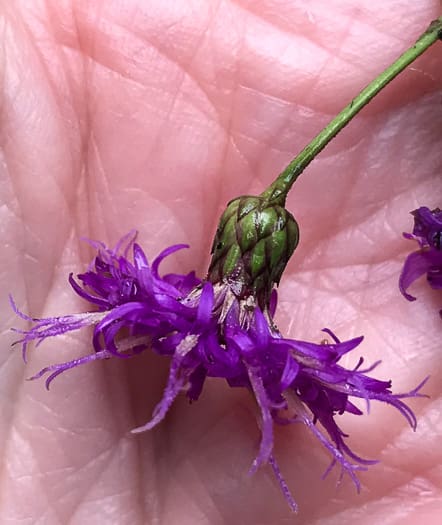Asteraceae
common ironweed
Vernonia gigantea
Synonyms
Vernonia altissima
Vernonia gigantea ssp. gigantea
Other Common Names
giant ironweed
Plant Type
Herbaceous Wildflower
Life Cycle
Perennial
Typical Size
3-5 ft. tall
3-6 ft. wide
Tolerant of
Occasional Flooding
Inolerant of
Dry Soil
Propagation
By seed, By cutting, By division
Plant Planting Notes
Spreads quickly and is best used in larger garden areas.
Plants/Diseases
May experience aphid infestations.
Wildlife Benefits
Nectar/pollen source for pollinating insects, Host plant for butterfly larvae
Leaves
Leaves alternate, oblanceolate with serrate margins; up to 6 inches long.
Flowers
Showy purple flowers with ray and disc flowers arranged in a panicle.
Fruit
Achene.
Toxicity
No known toxicity.

USDA Hardiness Zones
5, 6, 7, 8
Light Exposure
Full Sun, Part Sun/Shade
Soil Moisture
Moist
Soil Drainage
Well-drained
Soil pH
Acidic (less than 6.0), Neutral (6.0-8.0), Basic (greater than 8.0)
Native in South Carolina?
Yes
Plant Native Habitat
Disturbed areas such old fields and pastures as well as stream sides, roadsides, and bottomlands.
Global Conservation Status (NatureServe)
Secure (G5)
Federal Conservation Status (USFWS)
Not Listed
Distribution Notes
Rare in the South Carolina coastal plain, sandhills, and piedmont. Absent from the mountains.


